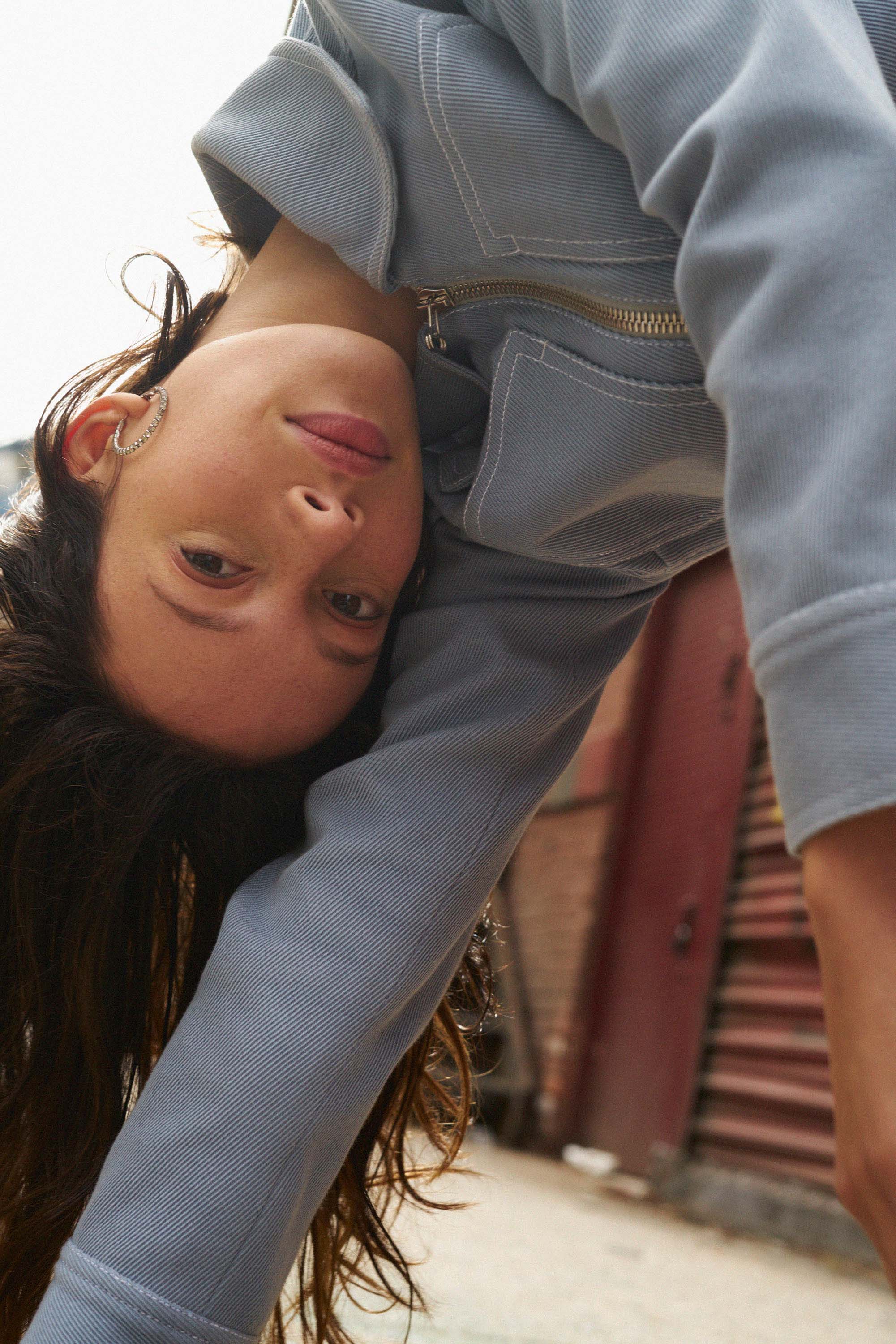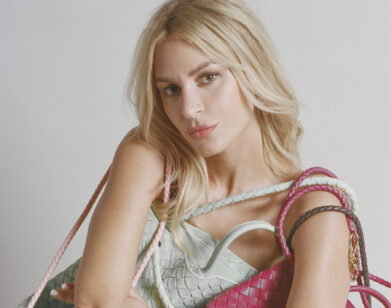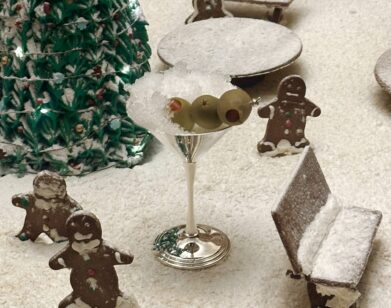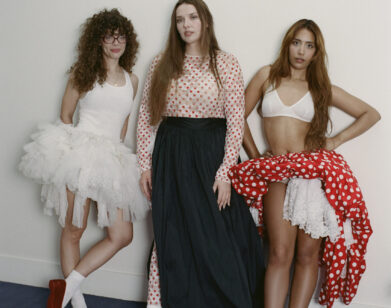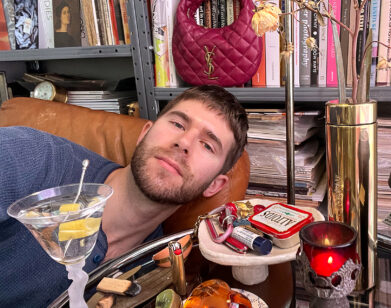Red hot New York label Lorod made us a mood board of their Western influences
The story of America is the story of Western workwear. From Levi Strauss crafting denim jeans for gold miners to Union soldiers popularizing Stetson cowboy hats, utility in harsh frontier conditions has driven some of the most important developments in the history of clothing. The upstart New York-based brand Lorod—designed by Michael Freels and Lauren Rodriguez—pays homage to this tradition with exquisite tailoring and silhouettes drawn from the history of workwear. For their recent Pre-Fall 18 collection, Freels and Rodriguez updated traditional Western looks for a contemporary audience. They offered Western work shirts with colorful piping, suede prairie skirts, and jacquard knits printed with images of the New Mexico desert.
“I think with every collection we’re interested in looking at the American cultural landscape and looking at imagery and garments that are particularly American in a way,” explained Freels over the phone last week. “We have roots in this sort of utility wear, so it’s nice to be able to have that foundation in construction and attention to detail and these sort of more ridged, substantial fabrics,” added Rodriguez.
Enthralled, we asked the duo to make us a mood board to represent their inspirations for their line. They put together two dozen images that illustrate their abiding love for the country’s history and beauty.
EZRA MARCUS: How are you guys doing?
LAUREN RODRIGUEZ: Good! We’re just doing some sales stuff but we’re done with the show and everything!
MARCUS: Before we get into the pictures you sent, can you just talk a bit more about what you find appealing about the Western themes you used in the latest collection?
FREELS: There’s also just so much personality in Western-wear that it just made it such a fun thing to develop. We’re thinking about what does America own, what imagery does it own, what architects does it own. The west was a natural, immediate correlation.
MARCUS: Are there any formative Western cultural objects that made a big impression on you when you were younger?
FREELS: That’s a good question. For me there’s not an immediate personal nostalgia associated with western, it’s more of like, the Marlboro Man and like Joan Crawford and Johnny Guitar, these kind of random interpretations of the west, but how it’s been nostalgia-lized, is that a word? [laughs]
RODRIGUEZ: For me The Wizard of Oz was a huge reference, like Dorothy and Toto, and the planes, and horses and that sort of fun stuff.
MARCUS: So let’s jump into these pictures. The first one I’m seeing is this David Hockney painting.
RODRIGUEZ: So we talked a lot about the landscape and interpreted that in our knits and our sweaters that we developed this season. We try to look at visual artists for reference for like color pallets and composition, and that was one of the references we looked at when talking about the landscapes. I think the color palette correlates directly to our palette for this collection, this rough orange, a little bit of green, a touch of that blue. It’s nice for us to pull inspiration from different practicing artists.
MARCUS: Cool, so moving on we have this photograph of a man with two taller women. Tell me about it.
FREELS: So that’s Nudie Cohn, who is this Ukrainian tailor who moved to California and started making Hollywood inspired Western Wear, and he made outfits for Elvis and Roy Rogers and Gene Autry and all these icons. So that’s an image of him with two of his clients, and I think it’s just one interpretation of the West. His interpretation was this high personality, high style, kind of eccentric western.
MARCUS: So moving on we have Roy Rogers.
FREELS: Yeah, the singing cowboy. We like the angularity of the tailoring in this image, the square shoulder and these little construction details throughout.
MARCUS: Tell me about this still from El Topo.
FREELS: Have you seen that movie?
MARCUS: I haven’t, actually.
FREELS: It’s so crazy. I think there’s something about the blurring of right and wrong and fact and fiction in that film that resonates with the time we’re living in. So in that film, the heroes and the villains resemble one another in this offbeat way, just like the ‘70s interpretation of old Western films. So it’s this revised Western film that’s a bit dark.
MARCUS: Next up is a photograph of shipping containers from Fort Davis.
FREELS: So that’s a picture I took on a road trip this summer in West Texas. Like Lauren was saying, we’re interested in reinterpreting the physical landscape this season. I think the palette is quite nice, these sun-drenched hues with more saturated hues.
MARCUS: Did you go to Texas when you already had the idea for the collection?
FREELS: I kind of hate designers who are like, “I went to this fabulous place and then started a collection!” [laughs] So I’m trying to avoid saying that, but it was definitely a starting point.
MARCUS: What’s up with this Danny Lyon photo of a woman by the side of the road?
FREELS: I think the open landscape is really pure. Danny Lyon was most noted for photographing the whole Civil Rights movement and biker gangs, but somehow I found this little gem.
RODRIGUEZ: It’s so nice, it represents this desperate open space in the desert that you find when you’re driving or walking through that space where it’s just endless, endless land that is separated by mountains and landscapes. I think that’s something that we wanted to sense in our space. For our presentation, we had natural material on the ground, and the space was so open and stark. It was nice that the only focus was these girls walking in clothes, and just a bunch of space with natural material.
MARCUS: Tell me about this sepia rainbow painting.
RODRIGUEZ: That’s a painting by Betye Saar, and again, it’s a reference to a color palette, and it was used in one of our invitations for the show. We did a lot of patch-working this collection, all these layers of fabric that are stitched together. So the actual patchwork is referencing American crops. A lot of our images and references are typically from this time period and are interested in white men and women, so it’s nice when we can to find inspiration from women of color, artists who aren’t white.
MARCUS: Tell me a bit more about Betye Saar, I’m not familiar with her.
RODRIGUEZ: She’s a black female artist who’s American. She has this famous series of washboard pieces where it’s a lady with a washboard cleaning clothes. It was a heavy take on racial bigotry. She’s really fabulous, a lot of her stuff is a bit more kitsch, but we’re drawn to her paintings.
MARCUS: Next up is a photo Lauren took of California.
RODRIGUEZ: This is taken in Ojai a long time ago and this image was used as one of the references for our sweater-knits. They show the photography of space with the background of trees and everything and on our sweater we have different grounds and color but it’s one of the images we pulled for that.
MARCUS: I love this photo of the original Lone Ranger, Clayton Moore.
FREELS: It’s by Mary Ellen Mark who is a documentary photographer, who is someone we looked at a lot this season, and I think this image is kind of ominous in a way. I mean, it’s a quite literal reference in that Clayton is wearing a shirt with this abstract piping, which is in the construction details throughout the collection.
MARCUS: There’s something really strange about the couch that he’s on.
RODRIGUEZ: The couch is also so weirdly familiar, like a couch you’d find in your grandmother’s house that you remember seeing or something. It’s really strange!
MARCUS: You included a picture of Judy Garland. What does she represent for the collection?
RODRIGUEZ: Love Judy Garland! We did these cute pinafore tops and dresses—we have a hard time with dresses, but we love pants—so we wanted to take inspiration from this plastic pinafore top that Dorothy is seen in. So to turn it into a top and a dress it really is, for me, super nostalgic. The color is so vibrant and magical in the film that it’s something that translates nicely into the clothing. We have the nice monochromatic pieces, that are like black and white and some tan and some cream and some white, and then we have these really saturated greens and oranges that aren’t really vibrant but they remind me of that moment of transition in the film.
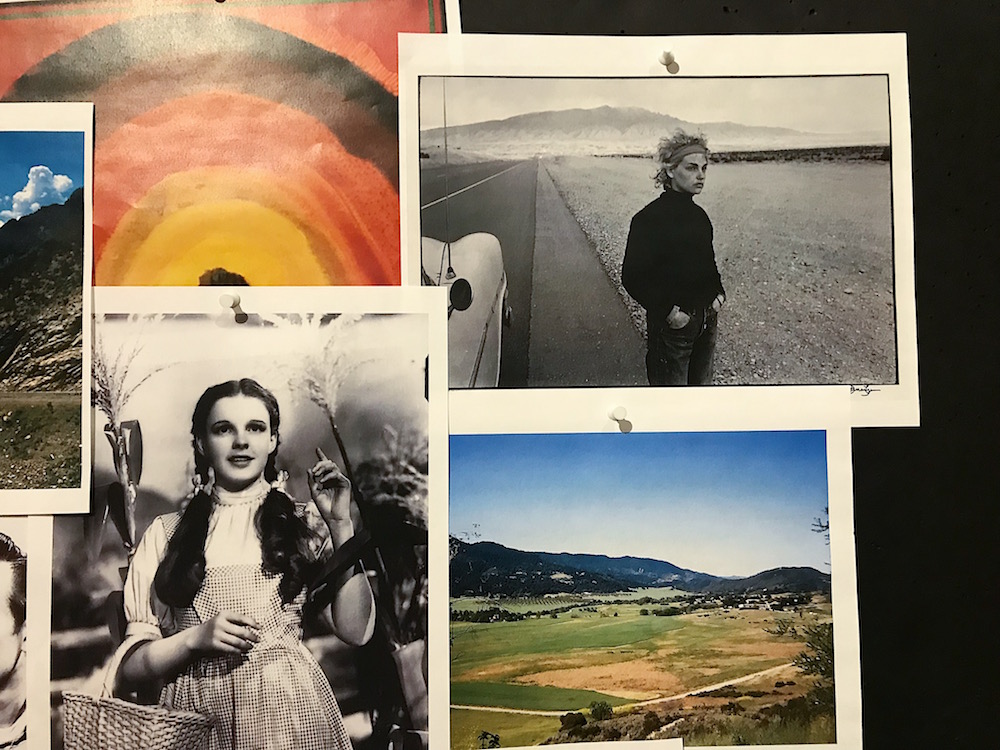
MARCUS: There’s a William Eggleston photograph of two boys sitting on the front of a car.
RODRIGUEZ: So this one, we have an archive that is consistent through Lorod, and Eggleston is a huge reference for us. We come back to his photos a lot. This image feels like these boys are getting into trouble sort of and they’re just parked here messing around. I think the sense of being in an old car and in an open space, it feels so nostalgic in a way.
MARCUS: Is mischief a personal quality you imagine in the Lorod consumer?
RODRIGUEZ: Definitely, I think we like fun, sort of nostalgic quirkiness.
MARCUS: Okay, so tell me what you love about this picture of Bonnie and Clyde.
FREELS: Classic American rebels, in a way. Her skirt was important for our collection this season. It’s images that are so American that we associate with the West.
MARCUS: How about Bridgette Bardot?
RODRIGUEZ: This silhouette was sort of the starting point for our trenches that we did this collection, sort of like a secret outer layer with substantial pockets, and we ended up developing a trench we’re really excited about. And Bridgette Bardot is obviously so iconic, and somehow we keep coming back to her. I think the images are sort of how we imagine our customer and it feels like this nostalgic era inspired image.
MARCUS: Next up is the Christo sculpture.
RODRIGUEZ: I love Christo and Jeanne-Claude a lot and this still taken from the insulation just felt so on-brand for this collection. We found it sort of motion it’s way through our development, so we had most of the clothes and it really resonated with me, the family that’s probably in this little RV just driving a long probably has no idea who these artists are, and are turning a corner and seeing this amazing monument that’s installed. Also think, Christo and Jeanne-Claude’s practice is similar to what we try to do with working in our community and including people. They would announce these projects to their communities and whatever they were installing, and people would volunteer and help install these amazing pieces. So as a duo I think they’re really interesting, and this idea of interrupting a landscape I think is really interesting for a collection.
MARCUS: What are some of the ways you involve the community in your collections?
RODRIGUEZ: We try to collaborate on as much as we can, whether it’s friends helping with set, or our showroom stuff and different projects that we’re working on, and we worked with friends that can do knits and sweaters and jewelry pieces. We try to pull from our community as much as possible-
FREELS: Especially with the show.
RODRIGUEZ: It’s just so rich, there are people around us who have so many amazing talents, so we want to have a foundation where we can build a platform where we can include all of that.
MARCUS: One of my favorite photos in this mood board is the one called “After a Flash Flood by Joel Sternfeld, of a car embedded in a mudslide.
RODRIGUEZ: Isn’t that a crazy photo?
MARCUS: What do you like about it?
RODRIGUEZ: I think it shows this sort of weird, depression, open California space. I think the mountain range is really interesting and this idea of different layers of landscapes. It has that sort of ‘70s feel to it. It’s very strange, it just plops down in this space and I think it’s interesting.

